Going Digital?
- Global GRACE

- Sep 2, 2020
- 9 min read
Since March of this year, we have been living in the oscillations of what has come to be called social isolation, with conflicting information, projections and sentiments interrupting ongoing processes within our educative, political and artistic movements. Not to mention the many dimensions of everyday life and relations.
As I write this blog post midway through the fifth month of pandemic-induced quarantine, more than one-hundred thousand deaths have been registered in Brazil, with a toll of more than one-thousand deaths per day over the last couple of months and infection rates also not showing any significant signs of decrease. Within this tragic situation – all too often overshadowed by the political crises under way in our country, taking on alarming dimensions reminiscent of many unresolved past experiences with military-corporate dictatorship – it has become imperative to materialize the recognition that life must go on. Not at all an easy recognition, even more challenging to put in practice.
It is in this spirit, of affirming life in the midst of so much loss and uncertainty, that one of our artistic residencies with the GlobalGRACE network in Brazil, led by the youth dance company Passinho Carioca with the creative support of the Maré-based women´s dance company Mulheres ao Vento, came to reinvent itself under such difficult conditions and propose a hybrid form through digital means and languages. Channeling our Friday-afternoon gatherings at Arena Carioca Dicró, which kicked off 2020 with explorations into embodied gender politics, into the spaces and times of WhatsApp exchanges, Zoom encounters and more.
This blog post is to share a bit of this process, the reinventions of artistic, conceptual and political methodologies, and to concretize an invitation to the premier of the dance production Na Manha that will become a testament to these many traversed pathways.
The reinvention of hybrid methodologies in the digital context entails a rethinking of both form and content. The medium is the message – has that not been one of the lasting mottos of a globalizing age?
From a mapping of accessibility and availability issues in the context of practical questions of subsidies of internet data plans; private transportation to individual shootings of the proposed production; what it looks like to rehearse remotely and overall health precautions to the dynamics of the creative process; the narrative proposals; the imagined audience and possibilities of reception and circulation. All of this and more had to be reconceived collaboratively.
A WhatsApp group became the stage of our rehearsals, with much of the reworking of the script and scenes – spoken, danced, and variously performed – being carried out through the exchange of text, audio and video messages, with the occasional touch-in through Zoom meetings, which proved to be more challenging to work out given the unequal distribution of internet connections in Rio´s peripheries.
After dealing with overall demobilization and the many disheartening pressures and challenges inherent to living through a global-scale pandemic – a learning process, in and of itself – a new format was forged to reflect the limits and possibilities of the actual moment, taking up the challenge of rethinking art, politics and pedagogy through the paradigm of the digital.
The agreed upon point of departure: it was necessary to assume and make explicit how the experience of the pandemic and social isolation cut across the artistic process, rather than an insistence or attachment to the original plan, concepts and proposal, which would ultimately maintain intact a parameter unsuited to measure the creative process and final outputs.
We recognized in these conjunctures an opportunity to give more visibility to the Company and their online crowdfundingprojects that began to circulate with more force during the pandemic, given rising expenses of health and sanitation supplies at a time of massive cuts in employment and schooling opportunities and associated social programs. Through the release of an audiovisual production, it would become possible to add to the Company´s growing portfolio for professional insertion in the art scene. As well as to propel varied forms of online activism, at a time when the Black Lives Matter movements were gaining visibility around the world and Company members were experimenting with digital artistic and political expressions and campaigns.
This opportunity to get into the digital logics, not only the digital space, also became an opportunity to experiment with the possibilities of communicating with a generation – aptly represented by the Company´s diverse youth – whose ways of being, thinking and relating are profoundly marked by these hyperlinked approaches. An opportunity for political relevance, although it goes without saying that much was renounced in the absence of face to face interactions, especially in the kind of work that takes the body as its privileged site of construction, and given, of course, the precarities, mourning and struggles intrinsic to the moment.
Another key factor in this collective decision-making process to ultimately go online was rooted in an understanding that, even with an eventual flexibilization of social-distancing measures, the kind of public that we cultivate (now called “agglomeration”) would not be possible to bring together anytime in the near future.
If one day it becomes possible to do the show live, no doubt, the content, not only its ostensive form, will need to be reconceived. Most likely, in the context of a larger show that has been in the works throughout the Company´s consolidation and internal organizing processes, to which this production serves as inspiration.
Here is the idea of fueling multiplicators so cherished in artistic and social movements in the peripheries that take on a pedagogical stance, centered as such in many of the residency and formative processes of the NGO networks within which we are working: Instituto Maria e João Aleixo, Instituto Promundo, and Observatório de Favelas. With two, three people, four, nine and more are affected. Seeds are planted, yet who does the tending and harvesting, or rather, their timing, is not contained within the bounds of a residency program.

It is important to note that these collective deliberations were made possible because of the group´s long-term history of collaboration, as well as the fact that the bulk of the formative residency that proposed this collective construction was already under way: the conceptual workshops, the creative laboratories, the sketching out of the dramaturgy of the production, all but the regular agenda of rehearsals to sew it all together were completed at the time when quarantine was declared (see blog post for more on this in-presence process over the months of January-March of 2020).
That is to say, beginning a new residency without these established relationships and archives would not be possible through the proposed methodologies, confirming our decision to postpone our final multilingual artistic residency to bring together these movements, residencies and community courses/dialogues into the project´s final exhibition at Galpão Bela Maré. Not to mention that more than two-thirds of favela residents do not have stable access to internet connection and many of the art-education approaches housed in the Galpão prioritize territorially-based approaches, what researchers with the Observatório de Favelas networks have called the construction of “inventive territories” and “corporified territories”. Individualized approaches to empowerment and development, so often espoused to peripheral communities, are fated to reproduce inequalities without a wholescale construction of the necessary conditions and infrastructure for peripheral subjects to assume the protagonism and renegotiate the founding pacts of society.
These deliberations and decision-making processes are didactic in and of themselves, in that they identify the limits and possibilities of political, artistic and educative processes committed to centering peripheral territories and subjects in the transformation of violent and exclusionary societies. This too must be systematized in our research, as it is from within these processes that the guiding concepts and methods are forged in ways aligned to the purpose of our work.
In this sense, these processes produced extensive archives of audiovisual materials – more attuned than any formal interview or focus group – to be worked through other processes, from a short documentary project on the Company to online course materials for the GlobalGRACE platform.
In terms of the creative process, the show had to be rethought and disaggregated into scenes, in order to enable individual shootings of the production, and reenvisioned to be projected onto a screen – no longer a stage. Where the camera follows the movement, rather than the other way around.
With the choreographic interlocution of Mulheres ao Vento´s Andreza Jorge and Simonne Alves, the format of videodança(videodance/screendance within the videoart movements and its innovations on the politics of representation and space-time relations beyond the visual logics of cinema or documentary approaches toward the expression of rhythmic and plastic contrasts) was chosen to guide the way. The question of how to do a show remotely without it becoming a short film or mini documentary, where the camara and its gaze would protrude, became a driver and key concept of the experimented methodologies. The shared desire was to create something where what would stand out and frame the video is the dance, the movement and the dramaturgy that was constructed in light of the many dialogues and experimentations of intersectional and embodied gendered norms and relations throughout the year.
For this to happen, new pacts had to be developed. We would need to keep the long-shot frame, with minimal audiovisual effects that could risk generating a fake or sterilized image, negating the context of its construction: social isolation. This meant that transitions, sequencing and the overall aesthetic narrative did not need to assume a linear form. Without the possibility of group rehearsals, the focus ends up being more dialogical through a scene-based methodology.
Beyond working with lighting as a primary means to produce this aesthetic and narrative commitment, the language of videodança that reflects this construction entailed rethinking the relationship between spoken word, sound and movement, body and costume/design, giving a whole new significance to the idea of corpo-orality that marked the first couple of months of the in-presence meetings of the residency, where ideas where constantly being reworked in and through the body, incorporating ideas as a means to effectuate lasting change.
Even the soundtrack had to be rethought, given YouTube´s property laws, and this ended up bringing in one of the Company´s partner DJs, Seduty, to create original music aligned with the new narrative proposal.

And as for the premier, we decided to take hybridity to literality, proposing a theatre-like approach to the digital space. With a time scheduled for the show to begin and end, and be taken offline to later welcome another showing on the selected weekend nights. This is one of the ways that we imagined to generate buzz through social media networks, simulating “bar bells” and preshow activities as well as a live-streaming audience dynamic and postshow conversation with the Company to discuss the creative process and possibilities for cultural production in and beyond social isolation.
With this proposal, we opened up much needed reflections for those who make or aspire to make their living through art, which is the dispute over the spaces of cultural production and its unequal distribution in the city, and how the digital space opens up new possibilities and presents specific limitations – increasingly entangled in its commercialization and surveillance.
In addition to the grossly unequal concentration of cultural and artistic equipment in the centers and middle-class areas of the city, the gatekeepers (more often than not, white men) tend to operate through exclusive personal networks privileging those who circulate in shared spaces of social and professional association. From the very first encounter of the residents, the problem that cut across so many of the discussions that began or passed through art came back to the question of who has the face to “sell themselves” and be recognized as artists. Reflecting widespread institutional and intersubjective racism/sexism, this dilemma presents unparalleled obstacles to bodies racialized and gendered as “folkloric” or “exotic” and mobilized almost exclusively for prescribed roles, events and times of the year, such as carnaval, charities and international exhibitions, social consciousness-raising events etc., denied the opportunity to contribute as artists in their own right. The possibilities for democratizing art, politics and society rests on transforming the inequities reflected and reproduced in each of these decisive spheres of reimagining ways of living together in respect.

It is within this context that Na Manha was produced through the GlobalGRACE artistic residency of Passinho Cariocaand Mulheres ao Vento, to which we would like to extend a warm invitation to one and all:
September 18, 2020
17:30 – Preshow warmup act for Na Manha: Master Class of Passinho Dance on Arena Carioca Dicro´s Instagram Page (@arenadicro)
17:50 – First “Bar Bell” (on Instagram to direct to YouTube)
17:55 – Second “Bar Bell”
18:00 – Third “Bar Bell” and Opening
18:00 – Premier of Na Manha on YouTube
18:30 – Postshow Q&A with Passinho Carioca + Mulheres ao Vento
19:30/20:00 – Online Dance Party with DJ Seduty
September 19, 2020
17:30 – Preshow warmup act for Na Manha: Master Class of Passinho Dance on Arena Carioca Dicro´s Instagram Page (@arenadicro)
17:50 – First “Bar Bell” (on Instagram to direct to YouTube)
17:55 – Second “Bar Bell”
18:00 – Third “Bar Bell” and Opening
18:00 – Premier of Na Manha on YouTube
18:30 – Postshow Q&A with Passinho Carioca + Mulheres ao Vento
*GMT-3 local time: Rio de Janeiro, Brazil
Meet the Resident Dancers:
Ayesca Mayara Souza // Daniel Henrique Costa Rocha // Mayra de Farias Lima // Nayara Costa da Silva // Richard Silva dos Santos // Walcir Silva De Oliveira
Photo Credits: Marcia Farias / Observatório de Favelas (@marciafariasfoto)
Written by Andréa Gill (andrea.b.gill@gmail.com)












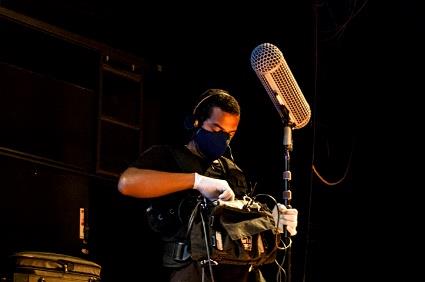





















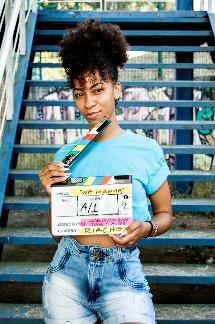

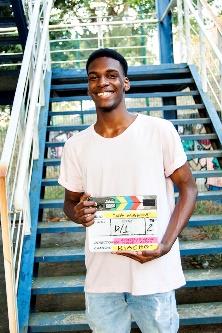

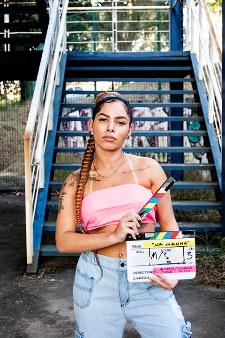

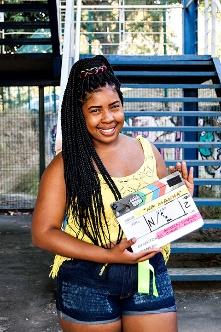

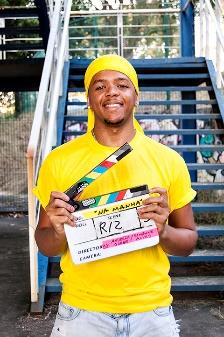

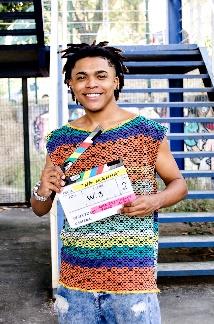



Comments